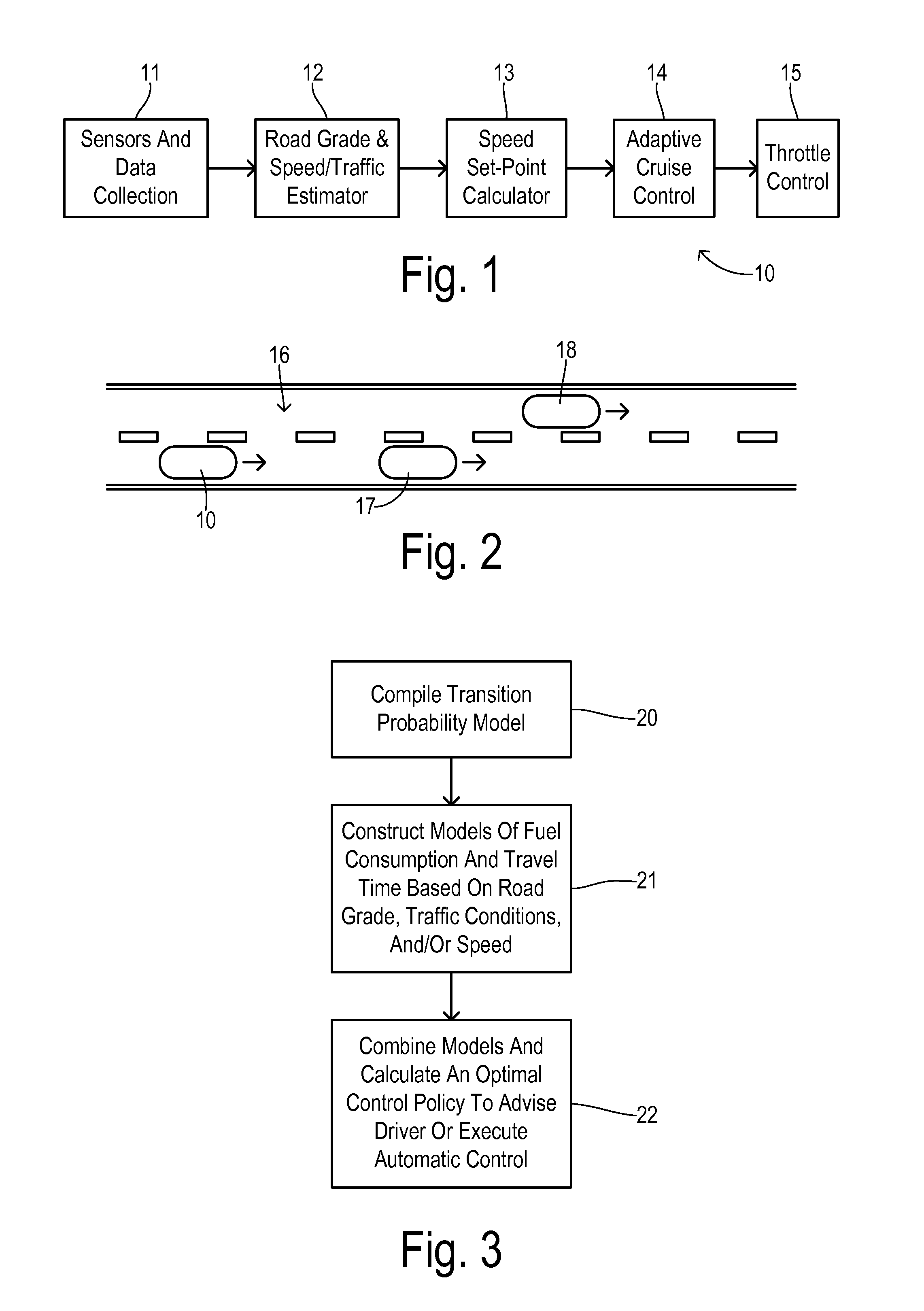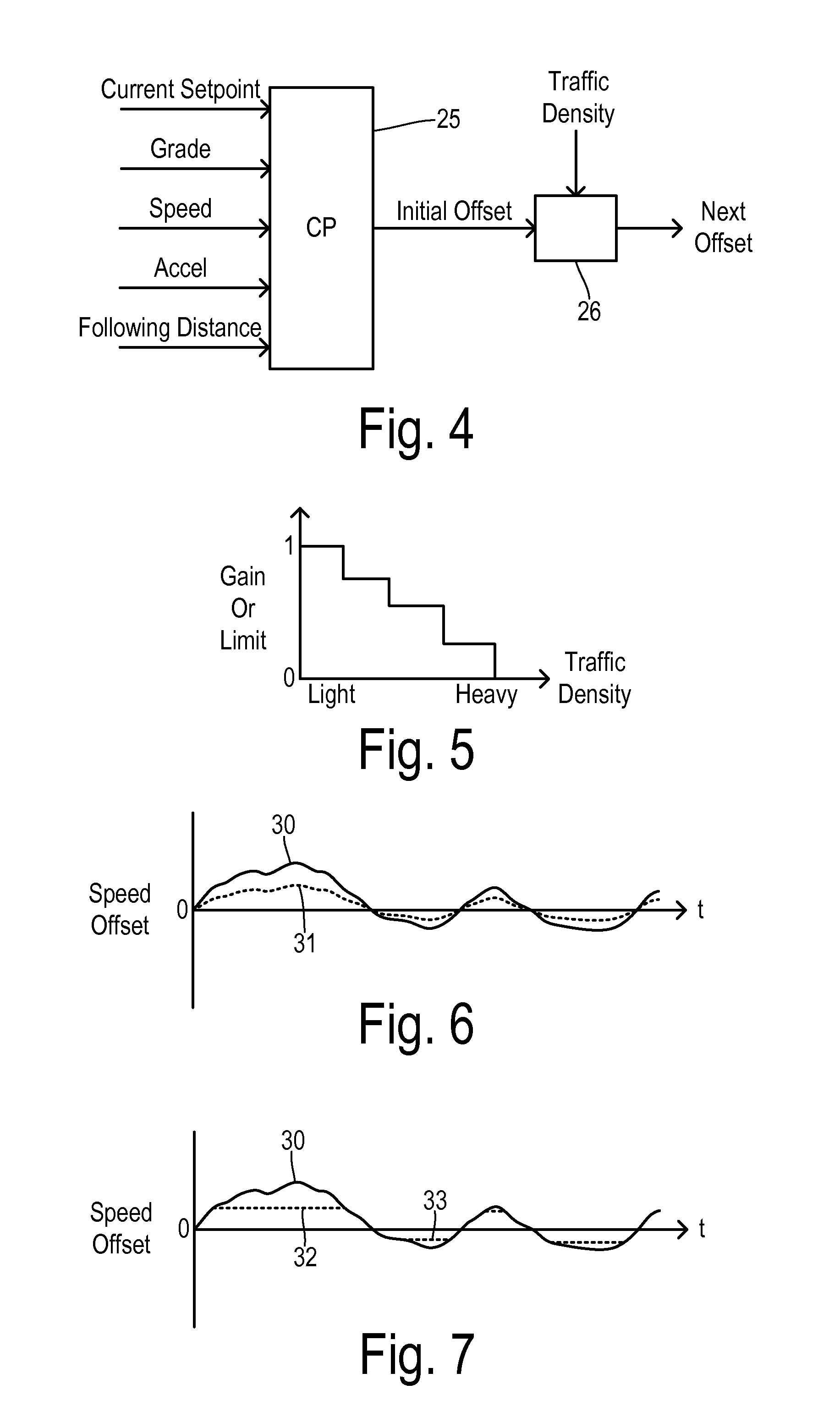Efficiency-based speed control with traffic-compatible speed offsets
a technology of efficiency-based speed control and speed offset, which is applied in the direction of braking system, process and machine control, instruments, etc., can solve the problems of increasing the likelihood of overall slowdown, affecting the affecting the overall speed of the surrounding traffic, so as to minimize the impact of surrounding traffic, minimize the effect of surrounding traffic speed, and best fuel economy
- Summary
- Abstract
- Description
- Claims
- Application Information
AI Technical Summary
Benefits of technology
Problems solved by technology
Method used
Image
Examples
Embodiment Construction
[0019]Referring now to FIG. 1, a vehicle apparatus 10 includes various components for implementing a speed advisory and / or control system for achieving improved fuel economy. A sensors and data collection block 11 uses commonly available devices and interconnections to supply and communicate various items of information as described below. A block 12 is a road grade and speed / traffic estimator that characterizes the current driving conditions of the vehicle for use by a speed set-point calculator (i.e., optimizer) 13. Road grade may be determined by GPS measurements together with a map database, by using other sensors such as an inclinometer or pitch sensor or calculated from accelerometer measurements, or by estimating it from other commonly available vehicle data such as from load and vehicle speed information provided by the powertrain control strategy. Speed or density of surrounding traffic can be measured using a radar or camera that may be provided as part of an adaptive crui...
PUM
 Login to View More
Login to View More Abstract
Description
Claims
Application Information
 Login to View More
Login to View More - R&D
- Intellectual Property
- Life Sciences
- Materials
- Tech Scout
- Unparalleled Data Quality
- Higher Quality Content
- 60% Fewer Hallucinations
Browse by: Latest US Patents, China's latest patents, Technical Efficacy Thesaurus, Application Domain, Technology Topic, Popular Technical Reports.
© 2025 PatSnap. All rights reserved.Legal|Privacy policy|Modern Slavery Act Transparency Statement|Sitemap|About US| Contact US: help@patsnap.com



